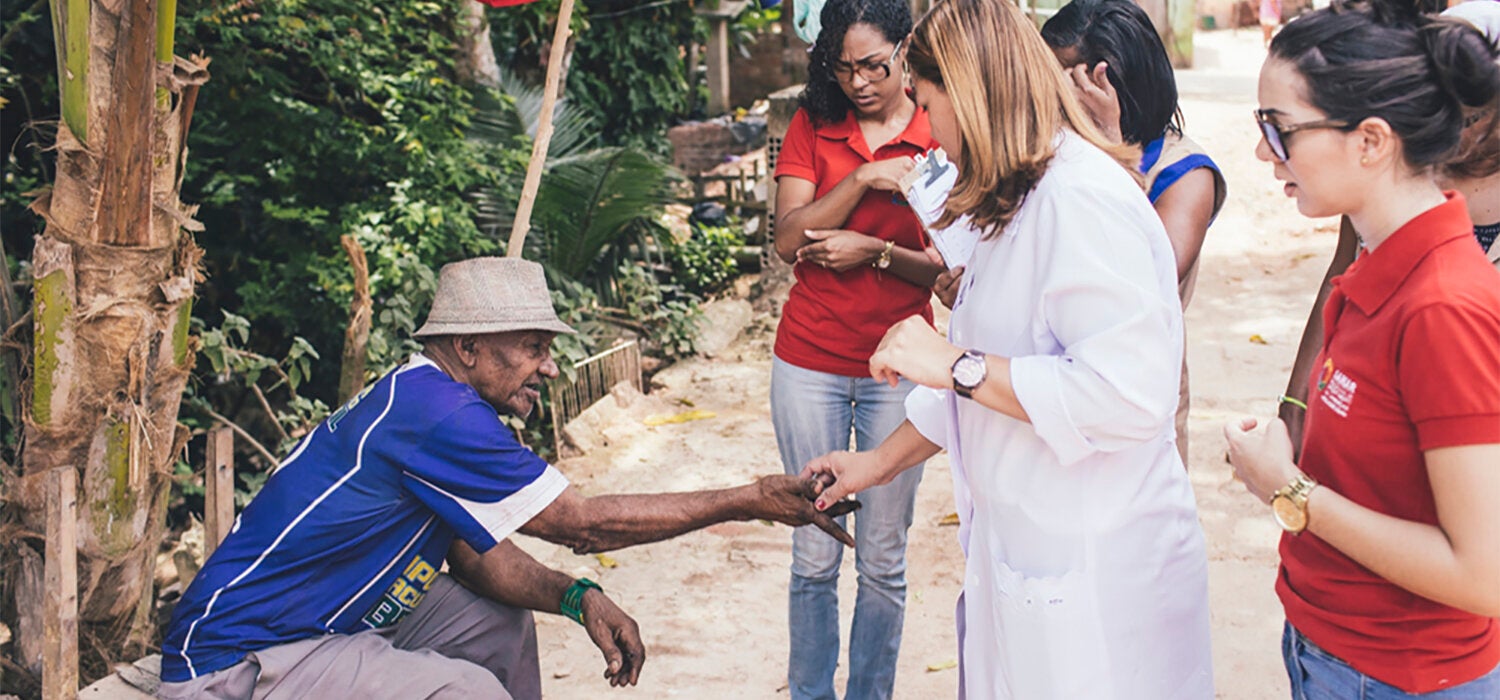In 2013, Brazil’s Ministry of Health began an innovative integrated campaign to improve the health of schoolchildren in the 852 municipalities where people are living in poverty and there is a high disease burden due to leprosy, trachoma blindness, and STHs. This initiative includes intestinal deworming and efforts to identify cases of leprosy and trachoma among students. The campaign is considered one of the most innovative interventions in the Americas because it integrates activities that are commonly conducted separately and simultaneously combines two strategies—the mass treatment of population groups at risk for infections such as STHs and trachoma blindness, and individual treatment of leprosy cases.
In 2011, Brazil formulated a national plan to fight NIDs, aiming to eliminate or control six diseases that affect populations that live in poverty and lack full access to the country’s health services: leprosy, lymphatic filariasis, schistosomiasis, onchocerciasis, trachoma blindness, and STHs. The integrated campaign was conceived as part of that plan, and is closely linked with the government initiative 'Brazil Without Extreme Poverty' (“Brasil Sem Miséria”) an inter sectoral effort aimed at significantly reducing the number of people living in extreme poverty.
The spearhead of the campaign involved educating children about symptoms of Leprosy and how to detect them in order to enable them to recognize the disease among themselves and other members of their households.
Campaign activities included distributing a form (a “self image sheet”) to schoolchildren. The form included six simple questions that could be answered with “yes” or “no.” The main question was “Do you have any spots on your skin?” If the answer was affirmative, other questions were asked regarding the nature of the spot. The questions were designed to help the child and parents carry out self-examination of the skin to search for initial signs of leprosy. The sheet also provided basic information about the disease and its principal signs and symptoms, including images. The content focused on the fact that leprosy is curable, and that its treatment is free of charge and guaranteed by Brazil’s Unified Health System (Sistema Único de Saúde, SUS).
Respondents were instructed to complete the forms and return them to the schools within one week. They were then delivered to health personnel for review. When cases were suspected, the children were referred to family health teams for medical assessment and to determine if the disease was present. When the disease was confirmed in a child, the local health teams examined the entire family for additional cases. This was a unique opportunity to detect, treat, and reduce the number of leprosy cases in the country, and it yielded excellent results, demonstrating the advantages of working in an integrated fashion, focusing interventions on students and schools.
The activity represented a major effort in educating teachers, parents, and students, and the Ministry of Health took advantage of the opportunity to conduct other interventions simultaneously, including administering antiparasitics to children and searching for and treating cases of other diseases that affect them, such as blinding trachoma and schistosomiasis. The program was conducted in more than 20.000 schools in Brazil.
Thanks to the campaign, nearly 3 million questionnaires were provided to public schools in 852 municipalities, and 293 cases of leprosy were detected early among children, as well as 114 additional cases among their contacts, for a total of 407 new cases detected. If not for this campaign, these cases would have been detected years later, with the consequent risk of disability and permanent physical and psychological sequelae. As part of the campaign, antiparasitics were also administered to some 3 million children. “This is the first time in 10 years that a massive deworming campaign of children in priority areas has been accomplished,” Rosa explained. About 45.295 eye examinations were also conducted, in 34 municipalities of six states, detecting a total of 2.307 positive cases of trachoma blindness. Treatment was provided for 2.387 students and 1.273 of their home contacts.
“Despite the challenges, such as getting state and municipal education secretariats to collaborate with the campaign’s health secretariats, the effort was worthwhile: ultimately, collaboration was excellent, and all of the school principals and teachers participated actively, in many cases conducting highly creative activities with the children,” Rosa said.
In 2014, annual investment in the leprosy program by Brazil’s Ministry of Health totaled approximately US$ 7.6 million. In addition to those resources, both the state and municipal secretariats allocate Funds from their budget to the leprosy control program each year.
Brazil receives a donation of approximately 16 million doses of leprosy treatment from WHO. For the integrated campaign, the Ministry of Health also received 9.2 million parasitic tablets from WHO to treat STHs, and purchased drugs to treat blinding trachoma using its own resources.
As an additional benefit of the campaign, many of the children who participated in the program helped educate their parents, siblings, and other close relatives about the disease.



